![]()
|
Johnson
Bros, (Hanley) Ltd |
|
Location and period of operation:
|
Johnson
Bros, Hanley Ltd |
Hanley |
1883 |
2003
# |
|
Earthenware and
Sanitary ware manufacturers at a number of factories in Hanley
and Tunstall, Stoke-on-Trent,
England.
|
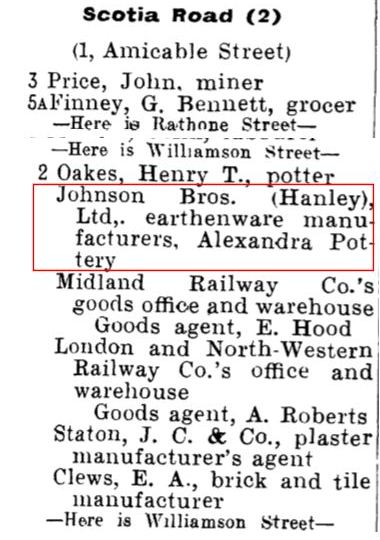 Scotia Road (Tunstall) Johnson Bros. (Hanley) Ltd., earthenware manufacturers, Alexandra Pottery |
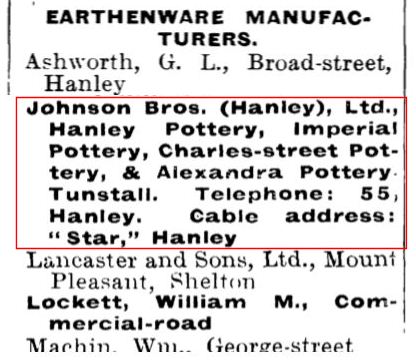
Earthenware Manufacturers (Hanley) Johnson Bros. (Hanley) Ltd., Hanley Pottery, Imperial Pottery, Charles-street Pottery, & Alexandra Pottery Tunstall |
from: 1907 Staffordshire Sentinel
'Business Reference Guide to The Potteries, Newcastle & District'
Sanitary ware:
|
By the 1880s, 'open plumbing' was becoming acceptable, with the porcelain fixtures in full view, instead of hidden in elaborate wooden surrounds. Of course, the Victorians then did to these newly visible vessels what they did best—they covered them with intricate embossing, magnificent glazing, and gilded decoration. Late Victorian toilets were masterpieces of the potter’s art, incorporating everything from Japanese and Delft-inspired motifs to classical dolphins and the curling trunks of elephants. Transfer decoration, of the type used for decorating dinner ware was used to give decoration at a low cost. During 1900-1910, the early washout closets were replaced by more efficient washdown and siphon-jet models; high water tanks started to be replaced by low tanks; and ornamentation, besides the occasional tasteful beading, virtually disappeared in favor of smooth, white, sanitary (i.e., easy to keep clean) surfaces. By 1910, toilets had pretty much arrived at a form and function not vastly different from today. A one-piece vitreous earthenware toilet appeared in 1922, and by the late 1920s coloured porcelain glazes had arrived. |
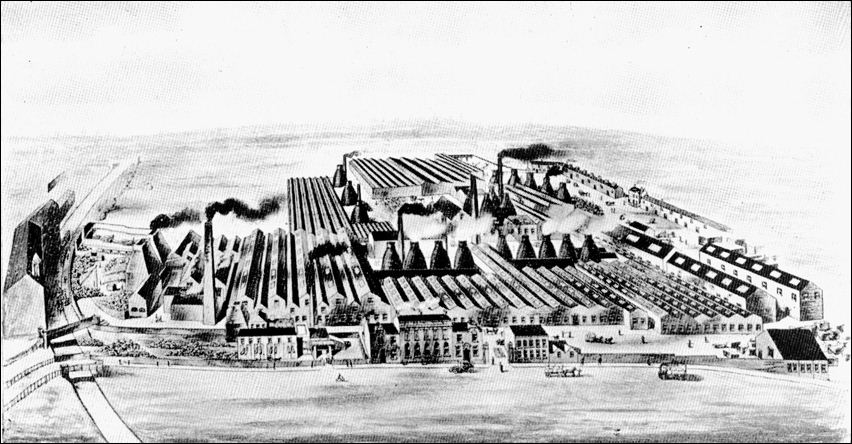
The Johnson Brothers Trent
Sanitary Works - from 1916 catalogue
- click for more on the Trent Works -
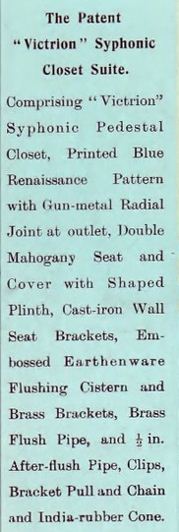
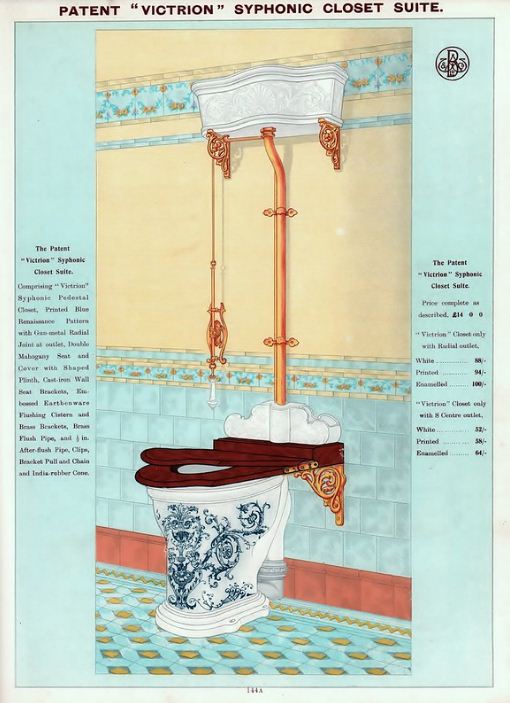
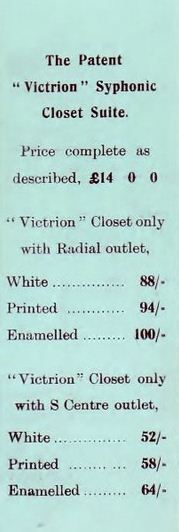
Johnson Brothers Patent
"Victrion" Syphonic Closet Suite
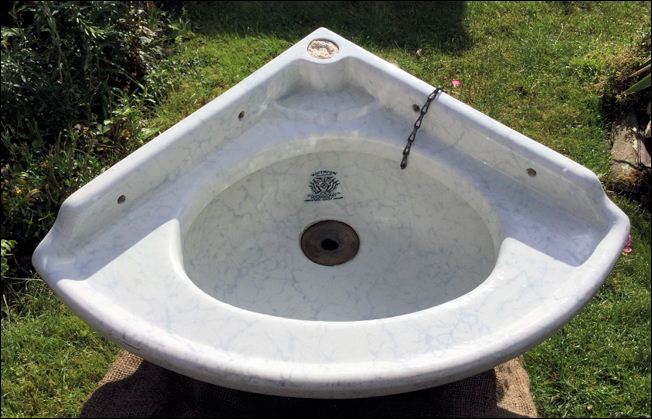
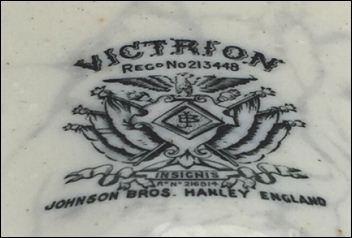
VICTRION
JB
Johnson Bros. Hanley England
VICTRION and INSIGNIS were registered trade names
The registration numbers give a registered date of 1893
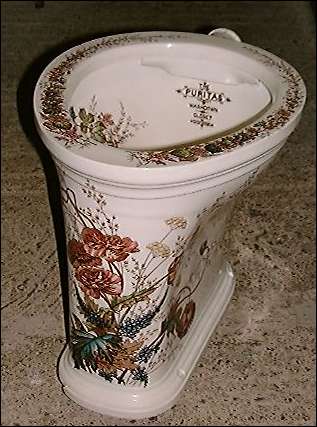 The Puritas introduced c.1894 |
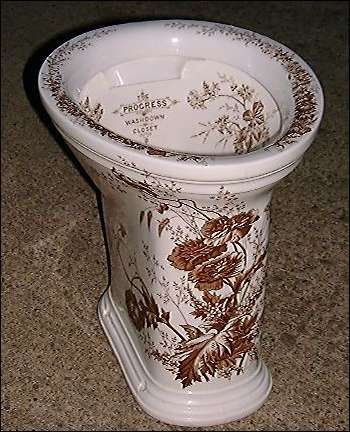 The Progress introduced c.1898 |
Johnson Bros. washdown closets
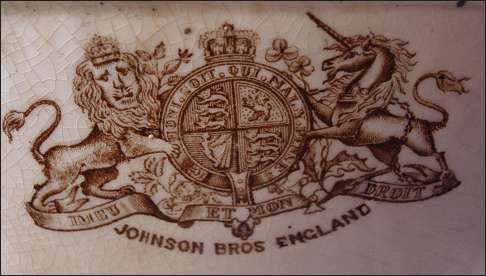 Johnson Bros England |
 Johnson Brothers Hanley Limited England |
both these marks carry the Royal Arms
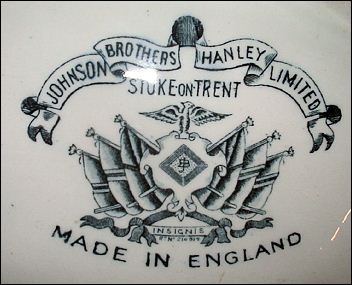
Johnson Brothers Hanley
Limited
Stoke-on-Trent
JB
Made in England
INSIGNIS was the registered trade name
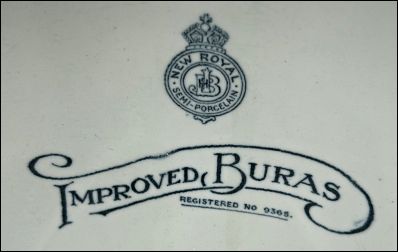 Improved Buras Registered No 9365 |
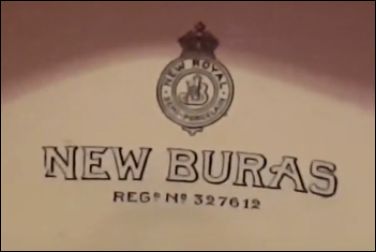 New Buras Regd No 327612 |
marks used on Johnson Brothers
(Hanley) toilets
no records have been found which might help with specific information on the
'BURAS' trade name
Dinner and tea ware:
|
Johnson Brothers
were one of the most successful Stoke-on-Trent tableware manufacturers, much
of the ware was exported, especially to the United States. Some of its designs, such as
'Eternal Beau', 'Dawn', 'Old Britain Castles' and 'Historic America', achieved widespread popularity After Wedgwood's acquisition of the American 'Franciscan Tableware' brand in 1979 Johnson Bros. started to make Franciscan ware for both the UK and US markets. From 1984 Johnson Bros. were the only manufacturer of this brand.
"Founded in 1883 by four
brothers, Henry, Robert, Alfred and Fred Johnson. The business was at first
on a modest scale, but in the last 70 years has expanded until today Johnson
Bros. is probably the largest firm of earthenware manufacturers in the
world, controlling a number of factories in England and abroad. The present
head of the firm is Sir Ernest Johnson. Pottery and Glass, March 1946. |
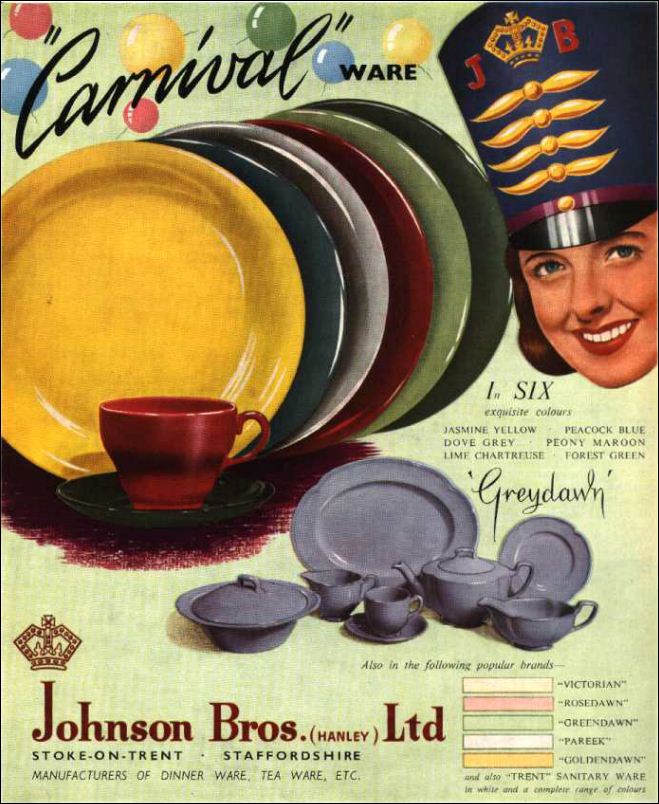
Johnson Bros. (Hanley) Ltd
Manufacturers of Dinner Ware, Tea Ware, etc.
"Carnival" Ware 'Graydawn'
Prestige and Progress - A Survey
of Industrial North Staffordshire
1955 publication of North Staffordshire
Chamber of Commerce
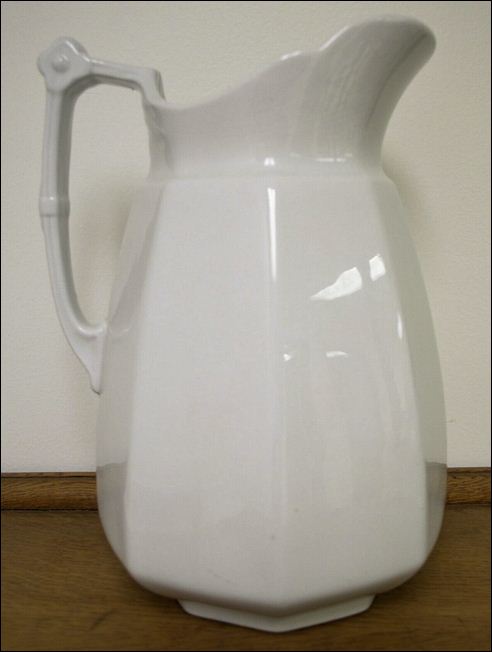 Johnson Bros white ironstone jug |
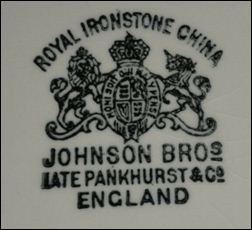 Royal Ironstone China Johnson Bros Late Pankhurst & Co England In 1883 Alfred and Frederick Johnson took over the Charles Street Works, Hanley from Pankhurst & Co. |
c. 1883-1913
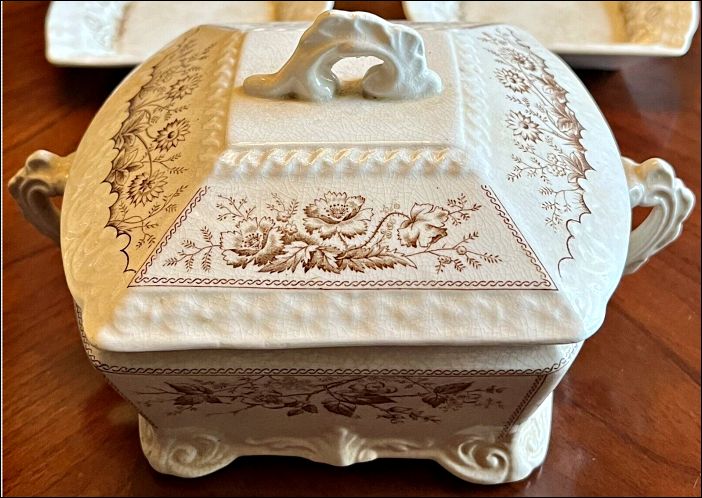 a printed design of various hedgerow plants and flowers in panels covering the service pieces and around the border on flatware sometimes ware with this registration number and mark carries the pattern name 'SYLVAN' |
the registration number 122733 shows that the pattern was registered on the 4th April 1889 to Johnson Bros, Charles Street, Hanley |
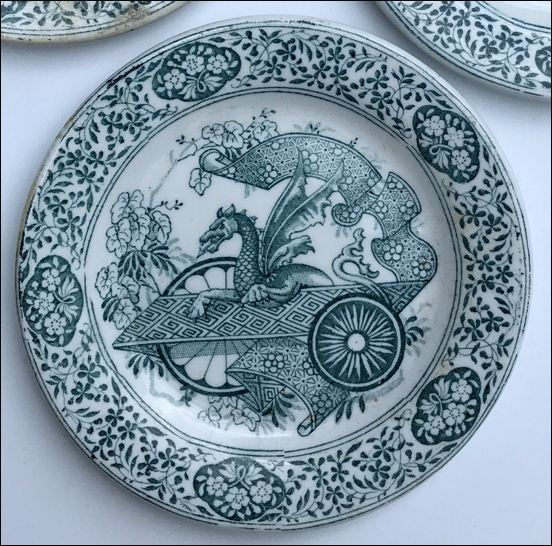 Transferware ware plate in the aesthetic style the pattern is called NÂGA - more on the aesthetic style - In Southeast Asian folklore, the
Phaya Naga are serpent-like creatures, believed by locals to live in the Mekong river or estuaries.
|
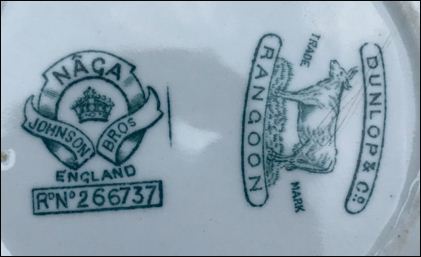 Johnson Bros England the registration number 266737 shows that the pattern was first registered on the 30th November 1895 to Johnson Bros., Trent Pottery, Hanley
Dunlop &
Co photos courtesy: Jacob Otte |
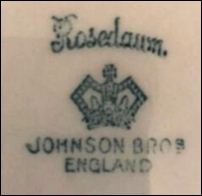
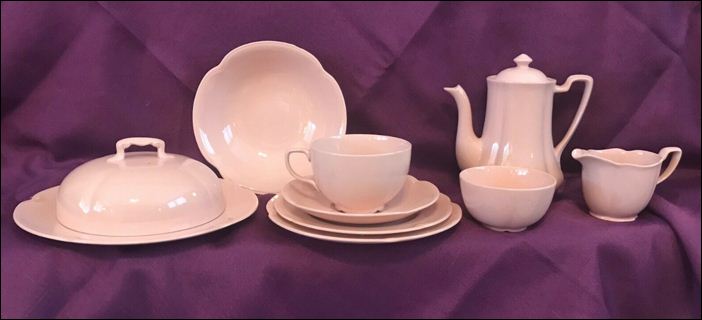
dinner ware in the Rosedawn
pattern
At the start of the 1920s, new shapes, patterns, and bodies were introduced
including the popular 'Dawn' range of coloured ware, which continued well into the 1960s.
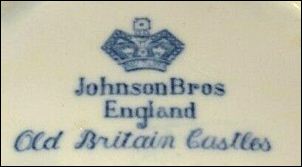
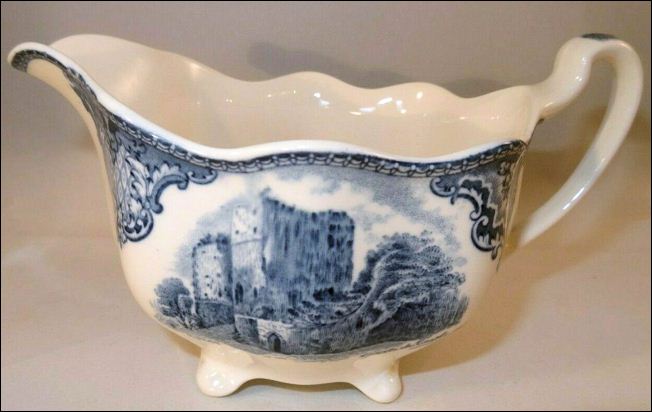
sauce boat - part of the Old
Britain Castle series
'Old Britain Castles' was introduced around 1930
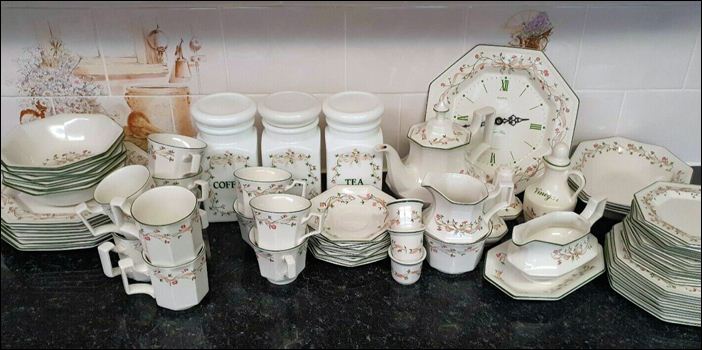
dinner set and accessories in
the Eternal Beau pattern
In 1981, Johnson Brothers launched the famous
'Heritage' range,
including one of the most popular earthenware range of all time - 'Eternal
Beau'.
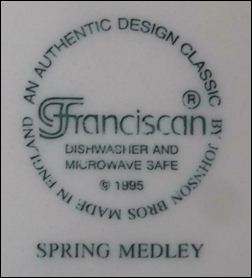
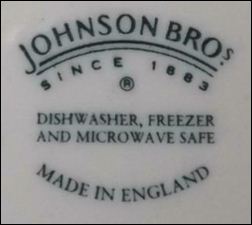
backstamps vary but the pattern is identical
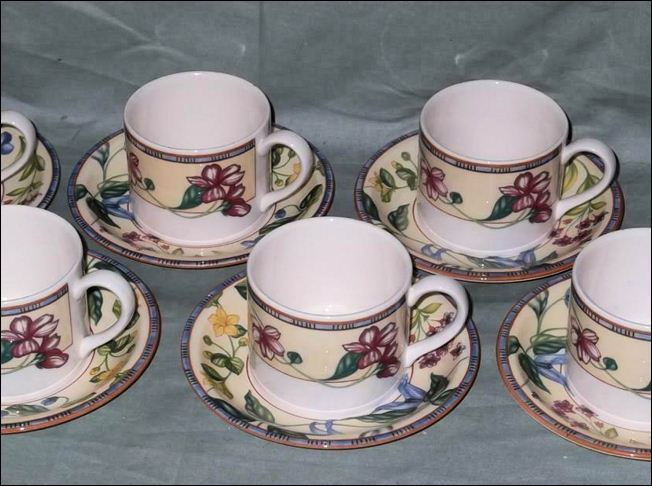
cups and saucers in the Spring
Medley pattern
Initials and marks used on ware for identification:
JOHNSON BROS.
ENGLAND
ROYAL IRONSTONE CHINA
ROYAL SEMI-PORCELAIN
ROYAL IRONSTONE WARE
CARNIVAL
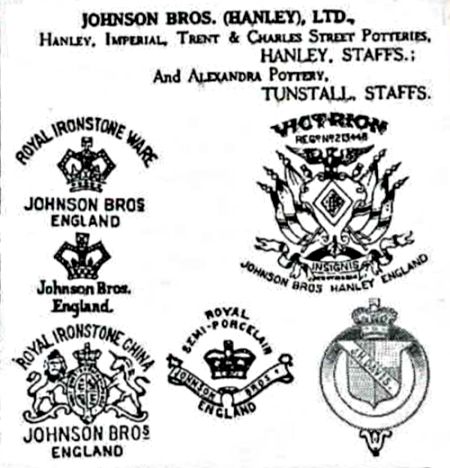
Johnson Bros. marks shown in the 1917 Pottery Gazette Diary
 Royal Ironstone China Johnson Bros. Late Pankhurst & Co. England c.1883 |
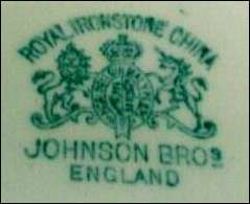 Royal Ironstone China Johnson Bros. England 1883-1913 |
Johnson Bros. superseded J.
W. Pankhurst & Co at the Charles
Street Works,
Hanley when Pankhurst became bankrupt in 1882.
- more
on the use of the Royal Arms -
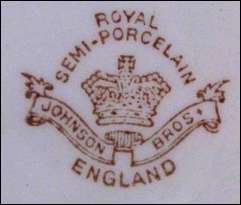
Royal Semi-Porcelain
Johnson Bros.
England
c.1900+
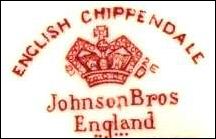 |
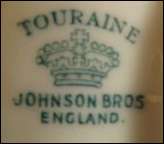 |
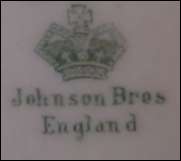 |
typical Johnson Bros. marks with a crown
c.1913 onwards
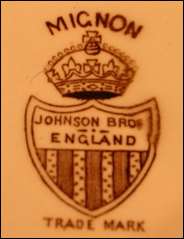
Johnson Bros.
England
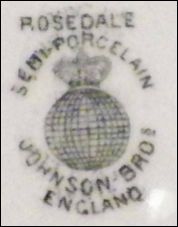
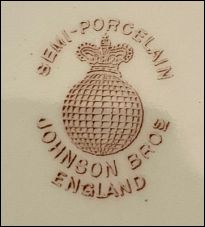
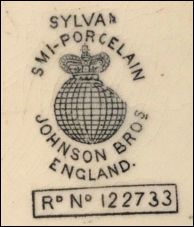
Semi Porcelain
Johnson Bros
England
style of mark with a crown above a globe
|
This mark does not appear in the directories and a period of use is not certain, however the registration number 122733 shows that the pattern SLYVAN was registered on the 4th April 1889 to Johnson Bros, Charles Street, Hanley. Both of the patterns 'Rosedale' and 'Sylvan' are a simple outline decoration of hedgerow plants and flowers on transfer decorated dinner ware. |
|
'Bull in a China Shop' was originally used as a trading name
and advertising campaign by J & G Meakin from 1965] |
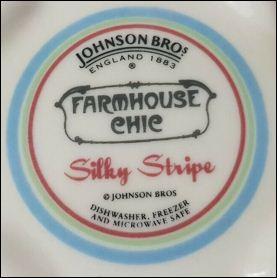
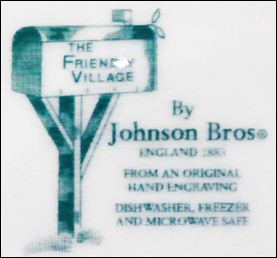
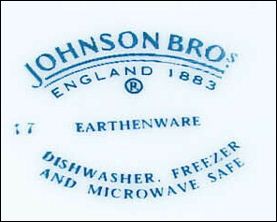
Johnson Bros
England 1883
These marks appear on ware that was produced in China NOT in England
In 2003 manufacture of ware under the Johnson Brothers name
was transferred to China. In 2015 the use of the name was discontinued.

Johnson Bros
Since 1883
Made in England
for comparison this is the mark used in the
1990s
it has the words 'Made in'
Johnson Brothers, Australia
| In 1957
Johnson Brothers opened a tableware factory
at Croydon Victoria, Melbourne, Australia, which was operated through a company known
as Sovereign Pottery Ltd.
Stephen Johnson, who arrived from England in 1957 to set up the family pottery in the outer eastern suburb of Croydon, brought out with him five senior managers and their families. As well as well as recruiting local staff some employees were immigrants from Stoke-on-Trent, England. There was considerable encouragement from the Australian government for this move in the post-World War II era when priority was given to attracting manufacturing industries from overseas. Stelphen Johnson spent about 25 years running the operation. |
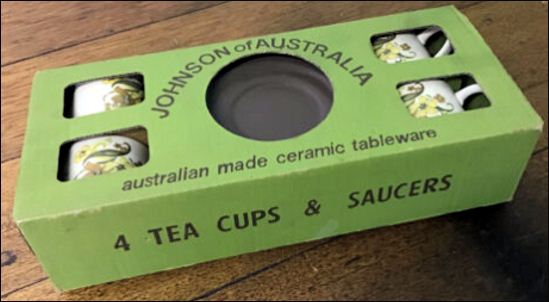

Johnson of Australia
Questions, comments, contributions? email: Steve Birks